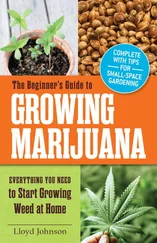Usually, the female plant is available from your personal garden. You must buy seeds to get a male plant because, unless a grower is breeding, male plants are usually thrown out as soon as they are identified. Once you have a male plant and a female plant, follow these simple steps to create new custom marijuana strains:
1. As soon as the male flowers, it should be taken out of the budding room and kept alive by natural lights or grow lights. A flowering female plant should also be removed from the budding room. The male and female plants must be covered if necessary to keep them in a 12-hour light/dark regimen.
2. Place a dark page of a glossy magazine under the male plant. When you see that yellow pollen has dropped from the plant onto the magazine page, it is time to place the two plants together.
3. Put the plants as close to each other as possible and gently shake the male plant to release its pollen over the female plant.
4. Pollinate the female several times a day for a couple of days, and then dispose of the male plant in your private yard or compost pile. (Not your garbage can — unless you are looking to get busted.)
5. Sprinkle any pollen on the magazine page over the female plant.
6. Place the female back in the budding room. Hopefully, you can do so before any pests from outside settle onto the plant and get carried into the grow room.
The female plant will begin showing swollen seed pods within a few weeks. A few weeks after the seed pods swell, the seeds will begin breaking open from their husks and will turn from white to yellow and finally to dark brown. When the plant is ready to harvest, the seeds will be dark and waxy and ready to germinate.
The best way to de-seed dried marijuana is to break up the buds and use a magazine or any other rough surface to roll the seeds away from the bud bits. Newspaper is not recommended for this task if you intend to smoke any of the weed bits that are left behind on the magazine. The newspaper ink will make the smoke taste bitter and is not very good for human consumption in any form. Use one hand to lightly sweep the visible seeds into a bowl or onto a table, and use your other hand to shake and vibrate the magazine to free more seeds from the buds. Rotate the magazine as you work so that the seeds are always rolling away from the pot bits. Seeds can be kept many years and even decades if they are dried and stored properly. They should be stored in an airtight container in a cool, dry place.
If you are going away for a few days or weeks and want to keep your garden alive, have a trusted friend take care of your room. If you prefer to keep things to yourself, simply bury some water crystals in the soil of your plants before you leave. Water crystals can be purchased at any hydroponics store. They are placed in a bucket of water and become a gel as they absorb many times their weight in moisture. They are then mixed into the soil and provide at least a week of water for growing plants. When using crystals to keep plants alive, turn off extra grow room lights so that the temperature is kept as low as possible, thereby causing the plants to use less water.
Another trick is to purchase a garden hose timer, which is available at hardware stores and hydroponics stores. A garden hose with timer attachment is connected to a water faucet that is turned to the open position and the timer will turn the hose on every day or two, for a set period of time, to automatically water the plants. A manifold is plugged into the hose when it reaches the grow room and smaller “spaghetti hoses” run from the manifold to deliver water to the individual plants. It takes some practice beforehand to learn the correct settings, but once set up timers can water a garden over a period of weeks. I don’t suggest this method of watering anywhere other than a concrete basement with a floor drain in case the timer fails. A safer method of automatic watering uses a reservoir that holds a limited amount of water, say 30 or 40 gallons, such as a plastic garbage can. A regular hydroponics watering pump on a timer can then be used to water plants from the reservoir over a period of days or even weeks. The water pickup in the reservoir should be lower than the drip emitters to prevent any water siphoning down to the plants when the pump turns off.
Light timers should be set as usual and will turn off and on repeatedly while you are gone. Timers must be the type that will turn on again automatically after a power failure. To minimize the need for watering the plants, don’t use an air conditioner or dehumidifier during your absence and set your grow room to cool itself with vent fans only. Turn off unnecessary grow lights while you are away to keep the room as cool as possible, which will keep the plants dormant to some degree. The plants will resume vigorous growth when you return from vacation and turn up the lighting to full strength.
If none of these methods is appealing, you can always shut down your garden and restart it with clones kept alive in your living room along with your other house plants. House plants live in a continual dormant state and need far less water than cannabis plants in a grow room. If you are uncomfortable with leaving cannabis clones around your house or apartment, you can always restart your garden with seeds. Seeds are preferred to clones that have been taken from diseased or damaged plants.
Lights don’t turn on?
Check the timer first to make sure it is set correctly and operating as it should. Then try plugging your lamp directly into a socket without using the timer. If the light turns on, then only the timer needs replacing. If the light doesn’t turn on, check the circuit breaker in the main panel. If the problem isn’t in the main panel, check if you need a new lightbulb. If a new lightbulb doesn’t do the trick, take the ballast and lamp reflector into a hydroponics store for examination and repair and replace if necessary.
Fan stopped working?
Verify that the timer is working properly. Make sure the fan and timer are plugged in properly. Check the circuit breaker in the main panel. Replace the fan or timer with a new one.
Odor building up in the house?
Check that vent fans are operating correctly and vent hoses are connected properly. Ensure that the air conditioner is working. Is it plugged in? Is the water reservoir full? Does the intake or exhaust filter need to be cleaned? Is the glass closed tightly on the vented lamp hoods? If the vented air circulation is becoming weak or slow, you might have to buy a new carbon air filter. As a preventative measure, replace the filter every year.
Heat building up in the room?
Verify that vent fans are operating and vent hoses are connected properly. Check the air conditioner. Is it plugged in and turned on? Is the water reservoir full? Does the intake or exhaust filter need to be cleaned? Is the glass closed tightly on the vented lamp hoods? If a vent fan is blowing weakly, you might have to buy a new carbon air filter.
Plants growing slowly?
Check the age of your grow lamps and change the bulbs every six months without fail. Are the grow lights the correct distance from the plants? Is the room the correct temperature and humidity? Remember, the ideal growing temperature is 78–80 degrees Fahrenheit, and the ideal blooming humidity is 50–60 percent. The ideal vegetative humidity is 60–70 percent. Don’t be alarmed if your temperature is a few degrees higher than 80. High humidity is more of a concern than high temperature. A grow room should never be higher than 80 percent humidity. Perform a soil slurry to assess your soil’s pH and salts levels. Check for pests.
Читать дальше












